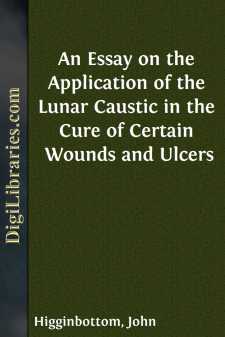Categories
- Antiques & Collectibles 13
- Architecture 36
- Art 48
- Bibles 22
- Biography & Autobiography 813
- Body, Mind & Spirit 142
- Business & Economics 28
- Children's Books 17
- Children's Fiction 14
- Computers 4
- Cooking 94
- Crafts & Hobbies 4
- Drama 346
- Education 46
- Family & Relationships 57
- Fiction 11829
- Games 19
- Gardening 17
- Health & Fitness 34
- History 1377
- House & Home 1
- Humor 147
- Juvenile Fiction 1873
- Juvenile Nonfiction 202
- Language Arts & Disciplines 88
- Law 16
- Literary Collections 686
- Literary Criticism 179
- Mathematics 13
- Medical 41
- Music 40
- Nature 179
- Non-Classifiable 1768
- Performing Arts 7
- Periodicals 1453
- Philosophy 64
- Photography 2
- Poetry 896
- Political Science 203
- Psychology 42
- Reference 154
- Religion 513
- Science 126
- Self-Help 84
- Social Science 81
- Sports & Recreation 34
- Study Aids 3
- Technology & Engineering 59
- Transportation 23
- Travel 463
- True Crime 29
An Essay on the Application of the Lunar Caustic in the Cure of Certain Wounds and Ulcers
Categories:
Description:
Excerpt
CHAPTER I.
ON HEALING BY ESCHAR.
Having been led, by several circumstances, to try the effects of the Lunar Caustic in the treatment of Wounds and Ulcers, and having great reason, from these trials, to think that this remedy may be used with much advantage far more extensively than has hitherto been done, I lay the results of my experience before my medical brethren.
A very natural mode of healing certain wounds and ulcers, is by scabbing; but this mode of treatment is attended by many disadvantages, as will be pointed out shortly; yet it may be supposed to have suggested to me some of those trials of the treatment by eschar, which I am about to detail.
I. ON THE ADHERENT ESCHAR.
It appears scarcely necessary to describe the immediate and well known effects of the application of the lunar caustic to the surface of a wound or ulcer. It may, however, be shortly observed that the contact of the caustic induces, at first, a white film or eschar which, when exposed to the air, assumes in a few hours a darker colour, and at a later period, becomes black; as the eschar undergoes these changes of colour it gradually becomes harder and resembles a bit of sticking plaster; in the course of a few days, according to the size and state of the wound, the eschar becomes corrugated and begins to separate at its edges, and at length peels off altogether, leaving the surface of the sore underneath, in a healed state.
In the formation of this eschar several things require particular attention. The application of the caustic should be made over the whole surface of the sore; and indeed no part requires so much attention as the edges; to make a firmer eschar the caustic should even be applied beyond the edge of the wound, upon the surrounding skin, for the eschar in drying is apt to contract a little, and in this manner may leave a space between its edges and that of the adjacent healthy skin.
At the same time, much attention must be paid to the degree in which the caustic is applied. In cases of recent wounds unattended by inflammation, it may be applied freely; but when inflammation has come on, too severe an application of the caustic induces vesication of the surrounding skin, and the edges of the eschar may in this manner also be loosened and removed. If every part is touched, a slight application of the caustic is generally sufficient.
The importance of avoiding all causes which might detach the edges of the eschar will be apprehended by the following interesting observation, which I have been enabled to deduce from very extensive trials of the caustic; it is, that, in every instance in which the eschar remains adherent from the first application, the wound or ulcer over which it is formed, invariably heals.
Not only the cause just mentioned, but every other by which the eschar might be disturbed, must, therefore, be carefully avoided; and especially, as the eschar begins to separate from the healed edges of the sore, it should be carefully removed by a pair of scissors....


